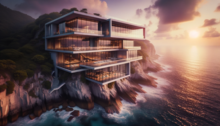DALL-E[4] is an advanced inteligência artificial[1] (AI) model developed by OpenAI[5]. Announced in January 2021, DALL-E is based on a modified version of the GPT-3[6] model. It has the ability to generate diverse and realistic images from textual prompts. Enhanced versions of DALL-E were released subsequently, with improvements in image realism and detail understanding. DALL-E uses a combination of AI models, including CLIP for image filtering, and a large quantity of parameters for image generation. The model can also manipulate images, fill in missing areas, and expand existing content in creative ways. Despite its impressive capabilities, DALL-E has raised ethical concerns around algorithmic bias[2], deepfakes, and the impact on visual artists. Nonetheless, OpenAI’s advancements in image generation tecnologia[3] have significant future implications, with ongoing debates surrounding the ethics and limitations of AI-generated art.
DALL·E, DALL·E 2e DALL·E 3 são text-to-image models desenvolvido por OpenAI using deep learning methodologies to generate imagens digitais from natural language descriptions, called "prompts."
Watermark present on DALL·E images generated on OpenAI's labs | |
 An image generated by DALL·E 3 with GPT-4 based on the text prompt "A modern architectural building with large glass windows, situated on a cliff overlooking a serene ocean at sunset." | |
| Criador(es) | OpenAI |
|---|---|
| Lançamento inicial | January 5, 2021 |
| Stable release | DALL·E 3
/ August 10, 2023 |
| Tipo | Modelo texto-imagem |
| Sítio Web | labs |
The first version of DALL-E was announced in January 2021. In the following year, its successor DALL-E 2 was released. DALL·E 3 was released natively into ChatGPT for ChatGPT Plus and ChatGPT Enterprise customers in October 2023, with availability via OpenAI's API and "Labs" platform provided in early November. Microsoft implemented the model in Bing's Image Creator tool and plans to implement it into their Designer app.